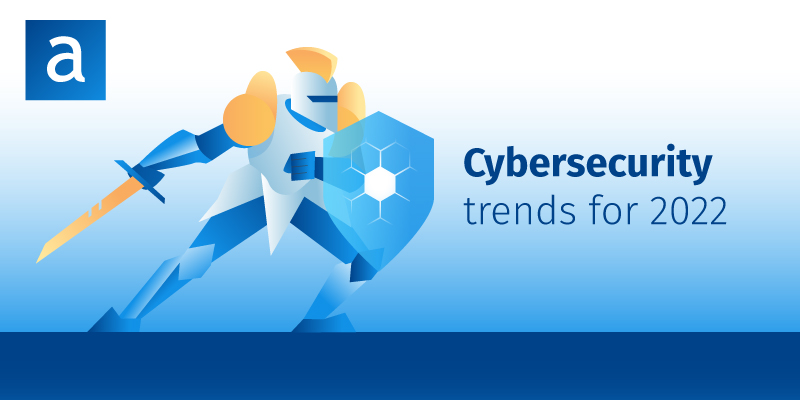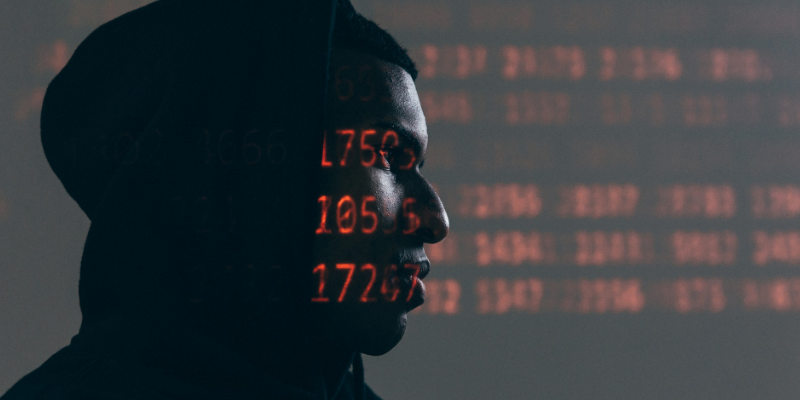7 cybersecurity trends and predictions for 2022

Did you know that a cyberattack is launched every 39 seconds? This is something that all businesses – large and small – should be concerned about. It’s no wonder that the cybersecurity landscape has been changing throughout 2020 and 2021. The Covid-19 pandemic has been particularly challenging for security teams. Given the shift towards social distancing and telecommuting for many industries, cybersecurity has become a top priority.
As companies look to consolidate their cybersecurity and data protection practices to adapt to a new reality, here are the most common cybersecurity trends you should be tracking in 2022.

Cloud threats are on the rise
As remote working and online collaboration intensified during the pandemic, cloud adoption was critical for companies to ensure business continuity. Although organizations had been migrating to the cloud prior to the crisis, the pandemic accelerated the transition process.
However, rapid migration to the Cloud introduces several new security challenges and threats, including misconfigured Cloud storage, reduced control and visibility, incomplete data deletion, and Cloud vulnerabilities. That’s why protecting Cloud infrastructures from cyber threats must be an urgent priority for all enterprises in 2022.

Focus on AI-powered solutions
Advances in Artificial Intelligence (AI) are increasing our ability to detect threats more successfully than ever before. One of the biggest threats to cyber systems is the difficulty in updating and patching in real time. As new threats become known to the hacker community, technology vendors need to quickly produce fixes on potentially compromised systems.
These affected systems have often relied on their human counterparts to take the necessary steps to rectify the weaknesses. However, with AI, sufficiently intelligent networks can process their weak points and repair them in real time, leading to less downtime and less stress for IT teams. These solutions will gradually hit the market in the coming years, and this cybersecurity trend will continue to grow. Until then, you need a good security and maintenance plan for your IT department to ensure that critical systems stay up to date with the latest security patches.

Attacks on mobile devices
Like other types of cyber-attacks, mobile malware is becoming increasingly sophisticated. This may be due to the increase in access to e-Commerce software and other platforms via smartphones or other mobile devices. Cybercriminals find these devices an easy means of attack as they are used for business and personal communication, shopping, hotel reservations, banking, etc.
In 2020, the Microsoft 365 Defender Research Team discovered a new Android malware, which was the latest evolution of mobile ransomware and much more sophisticated than its predecessors. This malware completely disabled the use of Android devices and forced individuals to pay ransom to get control back.

Supply Chain Attacks
Although supply chain attacks are not the most common cybercrimes, they are still extremely damaging. These can occur when cybercriminals find a weakness or a series of vulnerabilities in an organization’s ecosystem, particularly through third-party systems. This is fueled by the sudden increase in digitization, the rise of remote working, and the growing number of connected devices. Due to these factors, cybercriminals can exploit more access points in the supply chain.

Compliance in increasingly complex environments
Increasingly, companies need to be agnostic in their approach and implement solutions that reduce bottlenecks and blind spots to ensure that data is never at risk, regardless of where it is located and who is using it.
If there are no such guarantees, these blind spots can be leveraged by cyber-attacks, create management roadblocks, or jeopardize compliance with existing rules. Today, privacy and data security are highlighted as the main challenges for cloud adoption – and this is exacerbated when we talk about more complex environments.

Ransomware threats will continue to grow
71% of data breaches in 2020 are financially motivated, with 52% involving manual hacking rather than standalone malware. This means that cybercriminals may attempt to actively breach your servers and databases in order to cause financial damage. Ransomware attacks that involve holding a company’s database hostage in exchange for some forms of financial compensation have been growing at an alarming rate, becoming a threat to thousands of organizations around the world.
The best way to prevent these attacks from advancing is to educate your staff on how email and files from unverified sources should be handled. A single file downloaded onto your company’s intranet can cause critical damage to the company’s financial well-being.

Cyberattacks on the Healthcare Sector
Data breaches are one of the major cybersecurity trends in the healthcare sector, which is costing organizations huge amounts of money. With the outbreak of the new coronavirus, some of the healthcare organizations have relaxed their firewall rules so that their staff can work from home.
Cybercriminals are looking to obtain sensitive information about employees, companies and patients and this continues to be a threat to healthcare organizations. By 2025, the healthcare cybersecurity market will skyrocket to $125 billion. Thus, healthcare organizations are paying more attention to security requirements such as compliance with the (Health Insurance Portability and Accountability Act) to protect health information.
Cybersecurity threats will continue to evolve in 2022
While cybersecurity trends may be temporary, they are a good indicator of the future ahead. As technology evolves, we will inevitably encounter a new set of challenges in the IT sector.
We see these cybersecurity trends as some of the biggest challenges facing businesses and encourage all companies to continue to manage and educate their teams on these issues.
When it comes to threats to your business, it’s always best to stay one step ahead!




